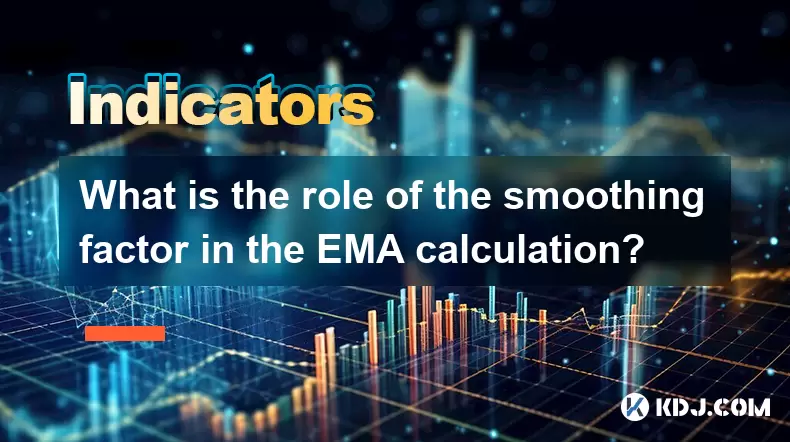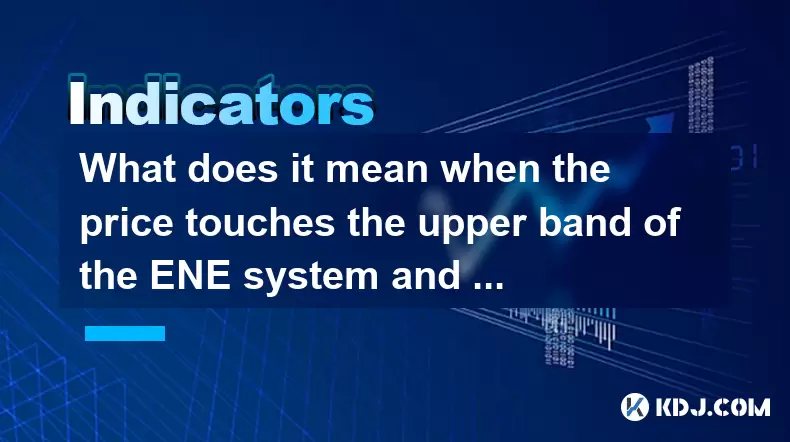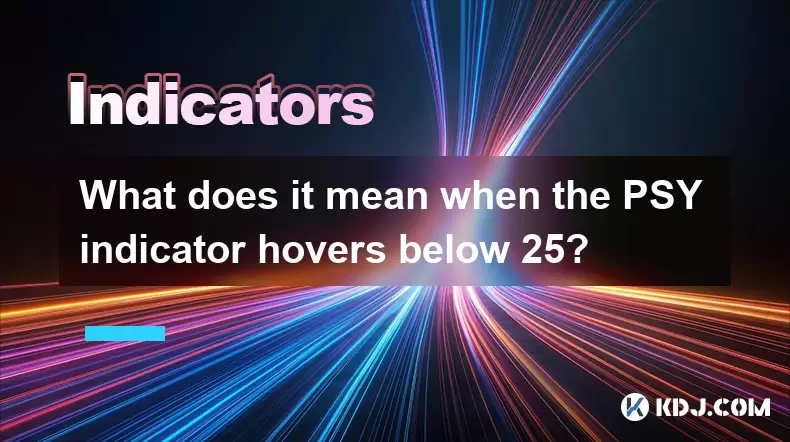-
 Bitcoin
Bitcoin $116700
0.13% -
 Ethereum
Ethereum $4229
5.18% -
 XRP
XRP $3.290
0.28% -
 Tether USDt
Tether USDt $1.000
0.01% -
 BNB
BNB $804.4
1.46% -
 Solana
Solana $181.3
1.92% -
 USDC
USDC $1.000
0.02% -
 Dogecoin
Dogecoin $0.2453
8.11% -
 TRON
TRON $0.3359
-0.82% -
 Cardano
Cardano $0.8187
2.71% -
 Hyperliquid
Hyperliquid $43.56
6.46% -
 Chainlink
Chainlink $21.22
9.48% -
 Stellar
Stellar $0.4533
0.95% -
 Sui
Sui $3.948
2.90% -
 Bitcoin Cash
Bitcoin Cash $571.0
-2.75% -
 Hedera
Hedera $0.2657
1.33% -
 Avalanche
Avalanche $24.32
2.80% -
 Ethena USDe
Ethena USDe $1.001
0.02% -
 Litecoin
Litecoin $122.2
-0.70% -
 Toncoin
Toncoin $3.440
1.95% -
 UNUS SED LEO
UNUS SED LEO $8.978
-0.09% -
 Shiba Inu
Shiba Inu $0.00001385
5.32% -
 Uniswap
Uniswap $10.94
0.24% -
 Polkadot
Polkadot $4.116
3.88% -
 Dai
Dai $1.000
0.00% -
 Pepe
Pepe $0.00001233
5.82% -
 Bitget Token
Bitget Token $4.511
0.53% -
 Cronos
Cronos $0.1572
2.50% -
 Monero
Monero $272.0
-1.82% -
 Ethena
Ethena $0.7563
17.60%
What is the role of the smoothing factor in the EMA calculation?
The Exponential Moving Average (EMA) uses a smoothing factor (α = 2/(N+1)) to give more weight to recent prices, making it more responsive than SMA in volatile crypto markets.
Aug 09, 2025 at 02:15 pm

Understanding the Exponential Moving Average (EMA)
The Exponential Moving Average (EMA) is a widely used technical indicator in the cryptocurrency trading space, designed to track price trends by giving more weight to recent data points. Unlike the Simple Moving Average (SMA), which treats all prices in a given period equally, the EMA emphasizes newer prices, making it more responsive to recent market movements. This responsiveness is crucial in the volatile cryptocurrency markets, where rapid price shifts are common. The core mechanism that allows the EMA to achieve this sensitivity lies in the smoothing factor, a key component in its calculation.
Definition and Formula of the Smoothing Factor
The smoothing factor, often denoted as “α” (alpha), determines how much weight is assigned to the most recent price in the EMA calculation. It is a value between 0 and 1, typically derived from the chosen time period. The formula for the smoothing factor is:
α = 2 / (N + 1)
where N represents the number of periods in the EMA. For example, in a 10-day EMA, the smoothing factor would be:
α = 2 / (10 + 1) = 2 / 11 ≈ 0.1818
This means that approximately 18.18% of the current EMA value comes from the most recent closing price, while the remaining 81.82% is derived from the previous EMA value. The smoothing factor thus controls the balance between responsiveness and stability in the EMA line.
Impact of the Smoothing Factor on EMA Sensitivity
A higher smoothing factor results in a more reactive EMA, closely following price movements. This occurs when using a shorter time period (smaller N), which increases α. For instance, a 5-period EMA has a smoothing factor of 2 / 6 ≈ 0.333, meaning over 33% of its value is based on the latest price. This makes it ideal for short-term traders seeking to capture quick momentum shifts in assets like Bitcoin or Ethereum.
Conversely, a lower smoothing factor, derived from a longer period (e.g., 50 or 200), leads to a smoother, less volatile EMA line. With a 50-period EMA, α = 2 / 51 ≈ 0.0392, so only about 3.92% of the new value comes from the latest price. This version lags more but filters out market noise, useful for identifying long-term trends in cryptocurrency price charts.
Step-by-Step EMA Calculation Using the Smoothing Factor
To compute the EMA correctly, traders must follow a precise sequence. The process begins with the SMA and then transitions to recursive EMA updates. Below are the steps:
- Calculate the Simple Moving Average (SMA) for the first N periods. For a 10-day EMA, sum the closing prices of the first 10 days and divide by 10. This SMA becomes the initial EMA value.
- Determine the smoothing factor using α = 2 / (N + 1). For N=10, α = 2/11 ≈ 0.1818.
- Apply the EMA formula for each subsequent day:
EMA_today = (Price_today × α) + (EMA_yesterday × (1 - α)) - Repeat the formula for each new price, using the prior day’s EMA as input.
- Plot the resulting values on a chart to visualize the trend.
This recursive method ensures that every historical price contributes to the current EMA, with exponentially decreasing influence over time. The smoothing factor governs this decay rate, shaping how quickly older data fades in relevance.
Practical Application in Cryptocurrency Trading
In crypto trading platforms like Binance, Coinbase, or TradingView, EMAs are commonly used to generate buy/sell signals. Traders often compare two EMAs—such as the 9-period and 21-period—to identify crossovers. The smoothing factor directly affects when these crossovers occur. A higher α makes the EMA react faster, potentially generating earlier signals but increasing the risk of false positives due to market volatility.
For example, during a sharp Bitcoin price surge, a 9-period EMA (α ≈ 0.1818) may cross above a 21-period EMA (α ≈ 0.0909) quickly, signaling a bullish trend. The difference in smoothing factors explains why the shorter EMA reacts sooner. Traders relying on such strategies must understand how α influences timing and reliability.
Customizing the Smoothing Factor for Strategy Optimization
Some advanced trading algorithms allow users to manually set the smoothing factor instead of relying on the standard formula. This customization enables fine-tuning based on specific market conditions. For instance, in a highly volatile altcoin market, a trader might increase α beyond the default to make the EMA more sensitive.
Alternatively, in a ranging market with no clear trend, reducing α can prevent whipsaws by smoothing out erratic price swings. This flexibility makes the smoothing factor not just a mathematical constant but a strategic parameter. Automated bots in crypto trading systems often optimize α through backtesting historical data to maximize returns under defined risk thresholds.
Frequently Asked Questions
Can the smoothing factor be set manually in trading platforms?
Yes, certain advanced platforms like TradingView allow users to modify the EMA formula or use custom scripts (e.g., Pine Script) to define a non-standard smoothing factor. However, most default EMA indicators automatically calculate α based on the period input.
Does the smoothing factor affect all types of moving averages equally?
No. The smoothing factor is specific to the Exponential Moving Average. Other types like SMA or WMA use different weighting methods. SMA applies equal weights, while WMA uses linear weights. Only EMA relies on α to exponentially decay past values.
What happens if the smoothing factor is set to 1 or 0?
If α = 1, the EMA equals the current price, eliminating any smoothing effect. The line becomes identical to the price chart. If α = 0, the EMA never updates, remaining constant at the initial value. Both extremes are impractical for trading.
Is the smoothing factor influenced by trading volume or only price and time?
The standard EMA calculation uses only price and time period to determine the smoothing factor. Volume is not part of the formula. However, volume-weighted variants of EMA exist, but they modify the price input rather than altering α itself.
Disclaimer:info@kdj.com
The information provided is not trading advice. kdj.com does not assume any responsibility for any investments made based on the information provided in this article. Cryptocurrencies are highly volatile and it is highly recommended that you invest with caution after thorough research!
If you believe that the content used on this website infringes your copyright, please contact us immediately (info@kdj.com) and we will delete it promptly.
- Trump, Crypto Vehicle, and WLFI Tokens: A New York Minute on the Latest Buzz
- 2025-08-10 00:30:12
- Wheat Penny Fortune: Unearthing Valuable Coins in Your Pocket Change
- 2025-08-10 00:35:19
- Dogecoin, PENGU, and Remittix: A New York Minute in Crypto
- 2025-08-10 01:10:12
- Ozark AI: Investment Opportunities and Analyst Projections for 2025
- 2025-08-10 01:15:17
- Cryptocurrencies 2025: Top Buys and Market Predictions
- 2025-08-10 01:20:12
- Pendle's Price Jump: Riding the Wave of Market Sentiment
- 2025-08-10 01:25:11
Related knowledge

What does it mean when the price is trading above the SAR indicator but the red dots are densely packed?
Aug 09,2025 at 11:49pm
Understanding the SAR Indicator and Its Visual SignalsThe SAR (Parabolic Stop and Reverse) indicator is a technical analysis tool used primarily to de...

What does it mean when the MACD histogram continues to shorten but the price reaches a new high?
Aug 09,2025 at 09:29pm
Understanding the MACD Histogram and Its ComponentsThe MACD (Moving Average Convergence Divergence) indicator is a widely used technical analysis tool...

What does it mean when the Triple Moving Average (TRIX) turns downward but the price doesn't fall?
Aug 09,2025 at 12:42pm
Understanding the Triple Moving Average (TRIX) IndicatorThe Triple Moving Average, commonly known as TRIX, is a momentum oscillator designed to filter...

What does it mean when the price touches the upper band of the ENE system and then falls back?
Aug 10,2025 at 12:42am
Understanding the ENE Indicator StructureThe ENE (Envelope) indicator is a technical analysis tool used in cryptocurrency trading to identify potentia...

What does it mean when the Williams' oscillator repeatedly hits bottoms but fails to rebound?
Aug 09,2025 at 09:28am
Understanding the Williams %R OscillatorThe Williams %R oscillator, developed by Larry Williams, is a momentum indicator used in technical analysis to...

What does it mean when the PSY indicator hovers below 25?
Aug 10,2025 at 01:14am
Understanding the PSY Indicator in Cryptocurrency TradingThe PSY indicator, also known as the Psychological Line indicator, is a momentum oscillator u...

What does it mean when the price is trading above the SAR indicator but the red dots are densely packed?
Aug 09,2025 at 11:49pm
Understanding the SAR Indicator and Its Visual SignalsThe SAR (Parabolic Stop and Reverse) indicator is a technical analysis tool used primarily to de...

What does it mean when the MACD histogram continues to shorten but the price reaches a new high?
Aug 09,2025 at 09:29pm
Understanding the MACD Histogram and Its ComponentsThe MACD (Moving Average Convergence Divergence) indicator is a widely used technical analysis tool...

What does it mean when the Triple Moving Average (TRIX) turns downward but the price doesn't fall?
Aug 09,2025 at 12:42pm
Understanding the Triple Moving Average (TRIX) IndicatorThe Triple Moving Average, commonly known as TRIX, is a momentum oscillator designed to filter...

What does it mean when the price touches the upper band of the ENE system and then falls back?
Aug 10,2025 at 12:42am
Understanding the ENE Indicator StructureThe ENE (Envelope) indicator is a technical analysis tool used in cryptocurrency trading to identify potentia...

What does it mean when the Williams' oscillator repeatedly hits bottoms but fails to rebound?
Aug 09,2025 at 09:28am
Understanding the Williams %R OscillatorThe Williams %R oscillator, developed by Larry Williams, is a momentum indicator used in technical analysis to...

What does it mean when the PSY indicator hovers below 25?
Aug 10,2025 at 01:14am
Understanding the PSY Indicator in Cryptocurrency TradingThe PSY indicator, also known as the Psychological Line indicator, is a momentum oscillator u...
See all articles

























































































